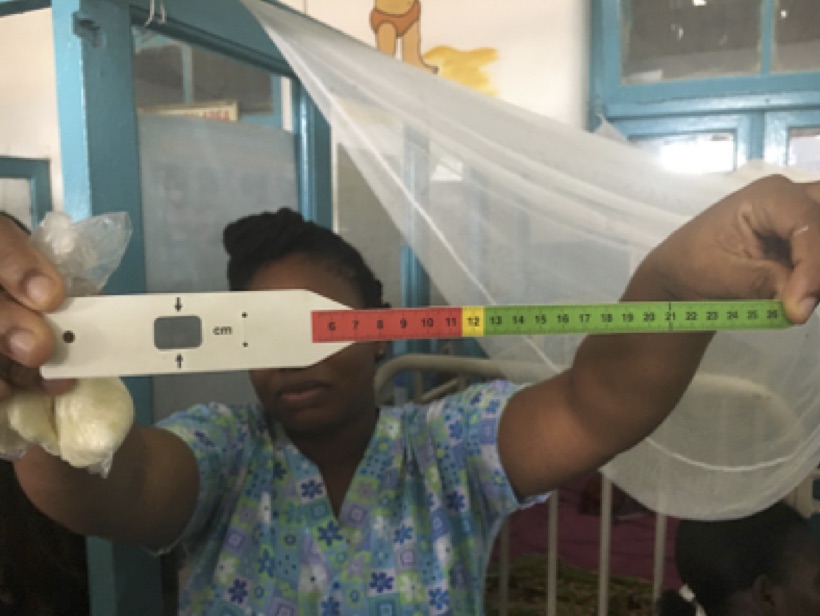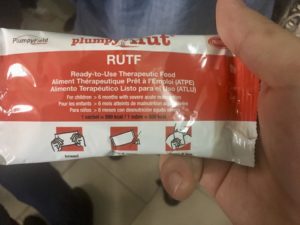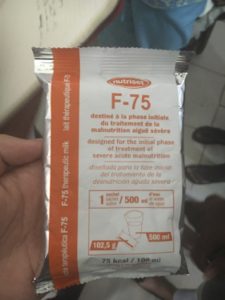By Xuanjie (Lucas) Gong, Biotechnology MS ’19; Shihan Dong, Biotechnology MS ’19; and Princess Aghayere, Health & Societies ‘19

Today, we all went to the Maternal and Child Health Hospital in Rural Kumasi. The main purpose of the visit was to observe malnutrition cases in children and to interact with doctors and nurses who treat children suffering from malnutrition.

While visiting the clinic, the nutrition group asked the questions that we prepared yesterday. It turns out that the situations here match up with our research. Doctors and nurses use WHO standards to determine the nutrition status of the kids. Also, they use MUAC tape to determine the severe acute malnutrition. Children who have MUAC less than 11.5 cm will be sorted into a severe acute malnutrition group.
As for solutions or treatments, they do know about and have RUTF (Ready-to-Use Therapeutic Food). We also learned that they have therapeutic milk, F-75 and F-100, to treat malnourished children in different phases. They have F-75 to use at the starting phase of treatment. If F-75 helps to stabilize the children, they move onto F-100, and they use diluted F-100 for children under 6 months.
We had 2 cases that we mainly focused on. The first case was of a 3-year-old girl who suffered from Kwashiorkor, Marasmus, and Marasmic Kwashiorkor. All 3 diseases are signs of severe acute malnutrition. She had been there for 3 weeks for treatment, and her condition was not improving. The doctors attributed her declining condition to poverty and the mother’s psychiatric problems. The patient’s mother has already lost two children to the same condition. The doctors describe the girl’s status as unstable because she often vomits and isn’t gaining weight. The second patient is a child exposed to HIV as a result of her mother being positive for the disease. Because she is only 3 months old, blood cannot be drawn, and testing cannot be done to ensure her HIV status.

In the evening, we went to a church to give a presentation to local women with little to no education. We started by asking them what they eat everyday, and luckily we received a lot of responses. From their responses, we could clearly see that their diet lacked components of vegetables and fruits. Then, we delivered a brief speech containing basic nutrition knowledge, mainly based on the six essential nutrients. We explained the function of these nutrients and some local sources to obtain them. Surprisingly, one of the female audience members said that this was her first time hearing about vitamins and minerals.
During the question and answer segment of our presentation, some women asked about the different types of sources for minerals and vitamins. In particular, one woman asked about the foods that she could eat to help with her hypertension. To our surprise, another women asked whether her intake of fruits was excessive. This question made us think about people’s awareness of obesity and other diseases related to overeating. At the end of the presentation, the audience was happy about what we presented today and looked forward to learning more on our next visit.
